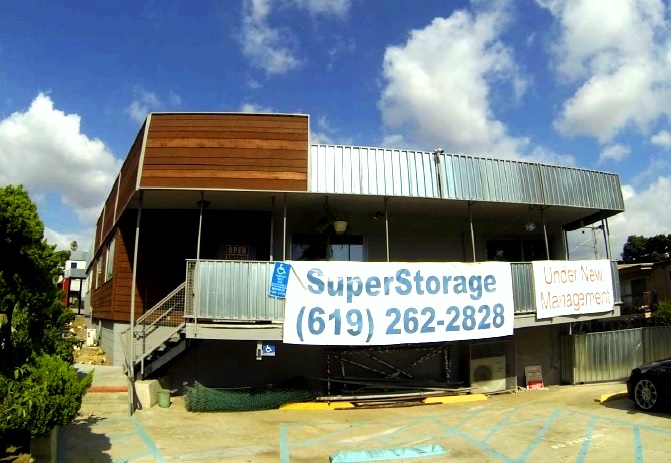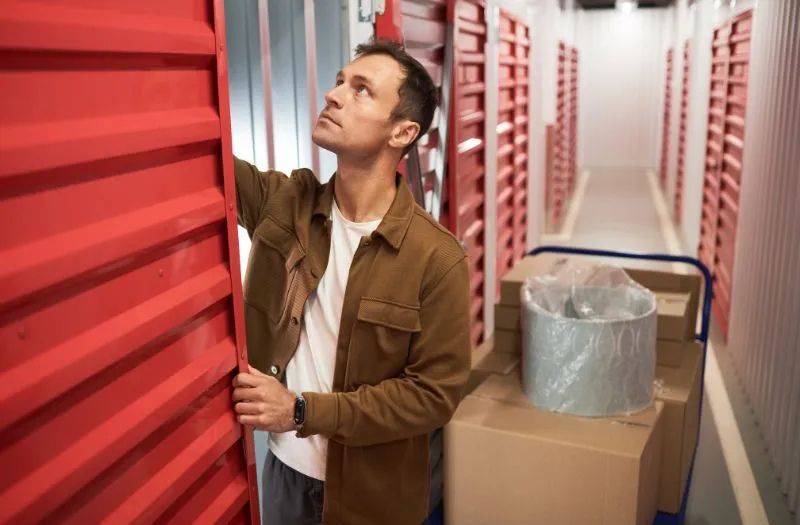Self-storage, whether for short- or long-term needs, provides a convenient solution for those in transition or seeking extra space at home.
But, aside from the initial problem of effectively packing a storage unit, several other important factors must be considered when utilizing this space. To truly master the art of self-storage and guarantee the safety of your belongings, it’s essential to take extra steps.
The following self-storage tips offer professional advice on how to navigate this process with ease. You can make the most out of your storage space while safeguarding your possessions.
1. Don’t Start Searching for a Self-Storage Unit at the Last Minute
Looking for the ideal self-storage unit? Don’t let the urgency of the moment dictate your decision. Size, pricing, and convenience are all important factors to consider while choosing the appropriate storage space.
Start your search early to guarantee you get the best match for your needs. Waiting until the last minute might result in limited availability or leave insufficient time for thorough research.

2. Pick a Trustworthy Storage Company
Opt for a reputable storage company with positive reviews, robust security measures, and a solid industry reputation. Prioritize facilities that offer features like surveillance, gated access, and insurance options to ensure the safety and protection of your stored belongings.
3. Determine What Your Needs Are in Terms of Size
Before choosing a self-storage unit, carefully assess your space requirements. Consider the volume and dimensions of the items you plan to store. Choose a storage unit that lets you move about freely while providing enough room for your possessions.
4. Security First
When it comes to self-storage, never compromise on security. Prioritize facilities with robust security measures, such as surveillance cameras, secure access points, and well-lit surrounding areas.
5. Create an Inventory List
Create an inventory list for effective storage planning. List items with a brief description will aid in selecting the right unit size. This organized approach streamlines the storage process and ensures a clear overview of your belongings.

6. Downsize as You Go
Downsize your belongings as you prepare for storage. Reassess items, and consider selling, donating, or recycling things you no longer need. This not only optimizes storage space but also simplifies the retrieval process.
7. Map Out Your Unit
Before placing items in your storage unit, create a map or plan. This simple but effective step involves sketching out the layout of your unit and indicating where specific items will be stored. Having a visual guide makes it easier to locate belongings and ensures efficient use of your storage space.
8. Clean & Cover
Before placing items in storage, ensure they are clean and well-protected. Wipe down surfaces, vacuum as needed, and cover furniture or delicate items with appropriate protective materials.
9. Pack Air-tight
Pack your items in air-tight containers or sealed plastic bags to prevent moisture and pests from damaging your belongings. This extra layer of protection ensures that your stored items remain in optimal condition, especially for long-term storage. Additionally, consider using moisture-absorbing packets to further safeguard against humidity.

10. Group Similar Items
This simple organizational strategy saves space and makes it easier to locate specific items when needed, streamlining the retrieval process.
11. Use Clear Bins
When you use clear containers, you can see what’s inside without opening each one. As a result, your storage unit will be more organized, and you will have an easier time finding what you’re looking for.
12. Label and Color Code Your Boxes
Improve organization by labeling and color-coding your boxes. Clearly mark each box with its contents and assign a color code to different categories. This method facilitates quick identification and makes your storage facility more accessible and efficient.
13. Don’t Store Anything That’s Highly Valuable
While reputable facilities provide security, it’s wise not to risk high-value possessions. Keep items like important documents, jewelry, or heirlooms in a more secure location, such as a home safe or a specialized secure storage service.
14. Organize with LIFO
Consider adopting the “Last In, First Out” (LIFO) approach when arranging items in your storage unit. Place items you’re likely to retrieve sooner towards the front of the unit, allowing for easy access.

15. Moisture Prevention
To safeguard your stored items from moisture, refrain from placing boxes directly on concrete floors. Instead, utilize pallets or skids as a protective barrier. Elevating your belongings ensures proper air circulation, preventing moisture absorption and potential damage to your items over time.
16. Place Heavy Items Down First
When loading your storage unit, prioritize placing heavier items at the bottom. Their stability will prevent boxes from toppling over and causing damage. Avoid overpacking boxes to prevent excessive weight, ensuring safety during handling.
17. Get the Most Out of the Vertical Space
Use shelving units to efficiently stack items upward, preventing wasted space. This not only optimizes the capacity of your unit but also allows for better organization and easy access to your belongings.
18. Clear a Path
When organizing your storage unit, ensure there is a clear pathway between items. Leave open spaces to navigate easily and reach items without moving everything around.
19. Have a Stepladder on Hand
Keep a step ladder in your storage unit for easy access to items stored at higher levels. This ensures you can reach and retrieve belongings safely, especially if you’ve maximized vertical space with shelving units.

20. Repel Unwanted Visitors
To deter unwanted visitors like pests, take preventive measures when storing items. Use pest repellents, such as mothballs or cedar blocks, and avoid storing food items in open containers. Keeping your storage unit clean and periodically checking for signs of pests helps safeguard your belongings.
21. Keep Your Key and Access Code Private
Maintain the security of your storage unit by refraining from sharing your key or access code with others. This simple precaution guarantees that only authorized people have access to your belongings, reducing the possibility of unauthorized entry and security breaches.
22. Get Insurance
Secure your stored belongings by obtaining insurance for your storage unit. While storage facilities implement security measures, insurance provides additional protection against unforeseen events such as theft, fire, or natural disasters. Check with your storage provider or explore independent insurance options to safeguard your items.
23. Regular Check-ins
Make it a habit to regularly check in on your storage unit. Periodic visits allow you to ensure that everything is in good condition and help you identify any potential issues, such as leaks or pest infestations, early on. Regular check-ins contribute to the overall maintenance and security of your stored belongings.
A Last Thought on Self-Storage Strategies
Whether your goal is downsizing, moving, or creating additional space, these 23 tips are designed to help you make the most of your self-storage experience.
By incorporating some planning and practical insights, you can efficiently utilize the extra space while ensuring the safety and organization of your belongings throughout their storage period.

If you’re looking for a storage facility to store your belongings, SuperStorage San Diego has got you covered in this department. Here at SuperStorage San Diego, we offer a wide range of unit selections and top-notch security. To learn more about our self-storage facility, please check out our website at https://superstoragesandiego.com/.
